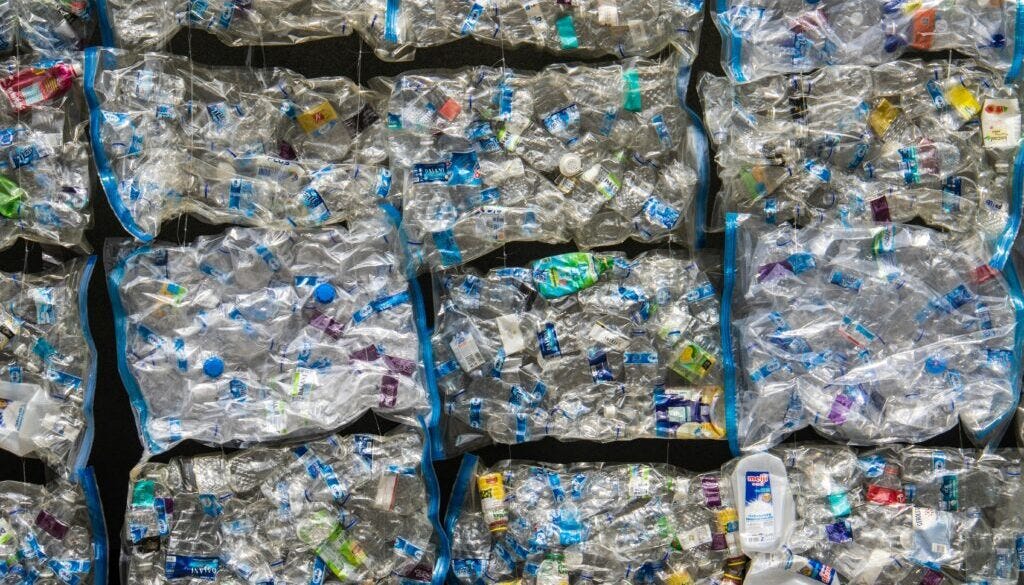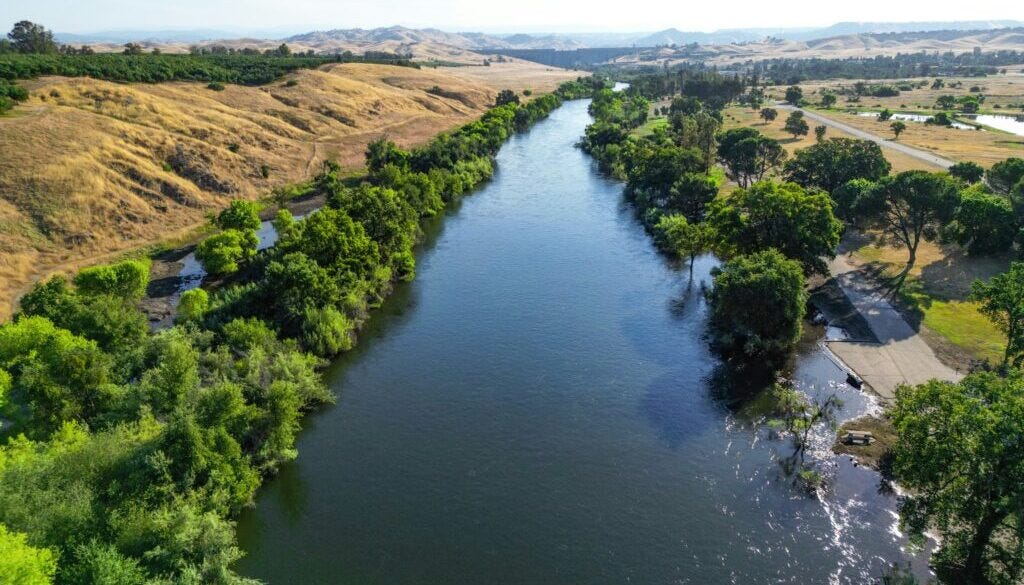Must-read recap: The New Lede's top stories over the last week
Are farmers flouting EPA rules on pesticide use? Satellite imaging shows pathways to water contamination. This and other stories found in The New Lede.
Analysis raises concerns about potential misuse of atrazine weedkiller in US Midwest
Corn growers across Midwestern states appear to be flouting regulations aimed at protecting important waterways from contamination with toxic atrazine weedkiller, according to an analysis of satellite imagery and field data that comes as US regulators ponder changes to rules for use of the pesticide.
The analysis, which was conducted by an agricultural industry consultant in Illinois and shared with The New Lede, found what could potentially be thousands of violations by farmers in Illinois and neighboring states. The analysis honed in on geographic points where farm fields planted by corn growers are seen closely abutting waterways, and assumes that farmers sprayed their crops with atrazine, a common practice in the US Midwest.
Though it could not be determined if atrazine was used on the fields, the chemical is applied to the majority of corn acres in the state, and the satellite images show clear pathways for the flow of farm chemicals off the fields and into waters. Critics say the information exposes critical problems with current regulation of atrazine, which is known to pose an array of health risks to humans and animals and is considered a dangerous water contaminant.
The images and supporting data from the analysis were submitted this week to the US Environmental Protection Agency (EPA) by the Center for Biological Diversity (CBD), which also obtained the information from the consultant, who wishes to remain anonymous.
“Willful ignorance is no longer an option for EPA because we’re literally showing them how bad this problem is field-by-field in the most atrazine-contaminated state in the country,” said Nathan Donley, CBD’s environmental health science director.
Amid EPA upheaval, states fear losing strong federal limits on PFAS in drinking water
With the looming possibility that the Trump administration could reduce federal limits on toxic PFAS chemicals in drinking water, public health advocates are warning that people across the country would suffer.
Concerns for the future of the federal limits come amid ongoing litigation over the federal limits on six per- and polyfluoroalkyl substances (PFAS) in drinking water. A 60-day stay on the litigation granted in February ends Tuesday, after which the Trump administration could seek to make changes to the standards, which were put into place a year ago under the Biden administration.
The American Water Works Association (AWWA) and the Association of Metropolitan Water Agencies (AMWA) sued the US Environmental Protection Agency (EPA) last June contending that the EPA broke the law when it established the limits.
The Trump administration has not stated if it will seek to rework the rule but those who helped fight for PFAS mitigation measures say they fear for its future.
“Once again we’re looking at millions of Americans that are going to be drinking unsafe drinking water if this standard goes away,” said Sarah Woodbury, the vice president for policy and advocacy at the Maine-based nonprofit Defend Our Health.
PFAS found in household dust near North Carolina chemical plant
Residues of harmful industrial chemicals, including some phased out of production 20 years ago, have been found in household dust in research that shows exposure risks go beyond contaminated food and water, according to a study published Monday.
The study analyzed kitchen dust collected in 2019 from 65 households in an area of North Carolina near a plant owned by DuPont spin-off company Chemours, looking for 48 types of toxic per- and polyfluoroalkyl substances (PFAS). The researchers identified at least one type of PFAS in every sample, with higher concentrations of the chemicals in homes located closer to the facility.
Twelve of the PFAS chemicals the researchers detected were per- and polyfluoroalkyl ether acids [PFEAs], a subset of PFAS chemicals that had previously been found in the plant’s air emissions or wastewater. All were detected at least once in the dust samples, with seven found in more than three-quarters of all samples. The researchers also found high levels of PFAS chemicals not necessarily linked to the plant in over 90% of samples.
“The detection of PFEAs in residential dust is important considering growing evidence of PFEA toxicity,” the authors wrote in the journal Environmental Science and Technology. “Our findings demonstrate the need for more rigorous exposure monitoring of dust in homes in PFAS impacted communities and more work to identify sources of ultrashort chain PFAS.”
(Read the rest of the story here.)
“Plastics addiction” is killing us, experts say, but hope remains
Plastics are negatively impacting our health in shocking ways, with the problem growing worse over time amid lax government regulations, a group of scientists and policy experts warned on Thursday.
“We have, I think, a plastics addiction,” said Shanna Swan, a professor and epidemiologist at the Icahn School of Medicine at Mount Sinai, said in a livestreamed conference hosted by Moms Clean Air Force.
“The regulatory system is broken, in the way it fails to protect us,” Swan said.
Plastic contamination harms everybody, the panelists said: Microplastics have been found in human organs, plastics additives are linked to heart disease and death, and air pollution from manufacturing causes respiratory illness and contributes to climate change. These issues are all particularly urgent now as the Trump Administration slashes rules and agencies meant to protect people from plastic-associated air and water pollution.
During the conference, leaders from various fields said key challenges include accurately communicating the science showing harm to the public, getting money and political influence from fossil fuel companies out of politics, and electing leaders who act in the interest of public health.
The effort to resist plastic pollution is urgent and existential, said Lynn Anderson, a campaigner with Moms Clean Air Force: “You’re fighting for your lives.” (Plastic manufacturing and waste processing is a major cause of air pollution.)
(Read the rest of the story here.)
Postcard from California: Trump vs. the delta smelt
The most powerful man in the world is waging war on a tiny, almost extinct fish.
The fish is the minnow-like delta smelt, less than three inches long with a lifespan of only a year. Its sole natural habitat is the Sacramento-San Joaquin River Delta – a marshy maze of more than 1,100 miles of waterways, levees and islands where its namesake rivers intertwine.
The smelt is a federally protected threatened species, a state endangered species and a key indicator species for the overall health of the Delta, a crucial migration corridor for Pacific salmon and steelhead trout.
It is under attack by President Trump, who blames the “essentially worthless fish” for restrictions on the flow of water from the Delta to Central Valley farms and Southern California cities.
The smelt’s survival depends on keeping enough fresh river water in the Delta to balance the salty seawater drifting in from San Francisco Bay. Until it was declared endangered in 2009, triggering flow limits, few people other than California water wonks had heard of it.
It has become a flashpoint in the California water wars – the never-ending debate over the best use of a scarce resource in a state burdened with recurrent drought, wildfires, and the climate crisis.
Now Trump is seizing control of the debate – regulations and the truth be damned.
(Read the rest of the story here.)
We hope you will Share
Subscribe
And
Send us your news tips!








I live in a part of the county where a mix of 'organic' farmers butt the borders of Big Ag growing acres of corn for cattle. There is atrazine in our well water. There are also cases of cancer of those in their 40s AND a lack of interest, especially amongst those working for Big Ag in changing. They seem unwilling to make the connection.